Original Author: Ignas, DeFi
Original Translation: CryptoLeo (@LeoAndCrypto)

Odaily Note: Ignas has raised a point that despite the approval of the BTC ETF, institutional investors are accelerating adoption, the "Genius Act" has been passed, and the "Clarity Act" is about to be introduced. There is no regulatory crackdown, no major hacking incidents, and no fundamental narrative collapse, yet BTC remains stagnant with insufficient liquidity. At this moment, early BTC investors are gradually cashing out in a planned manner (rather than selling off), while new investors are planning to buy on dips.
Key Insights
Early BTC believers are cashing out profits;
This is not a panic sell-off, but a natural transition from concentrated holdings by whales to diversified holdings by everyone;
Among all traceable on-chain indicators, the most obvious signal is the selling by whales.
First, let's look at BTC
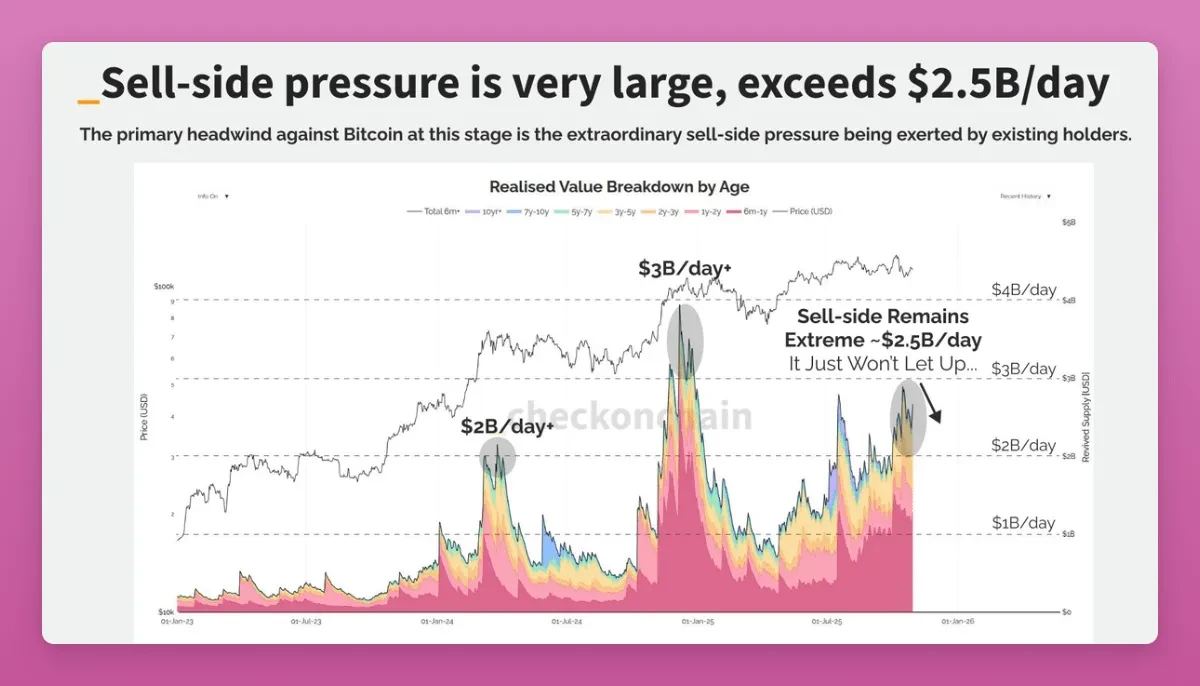
Long-term holders have sold 405,000 BTC in the past 30 days, accounting for 1.9% of the total existing BTC supply.
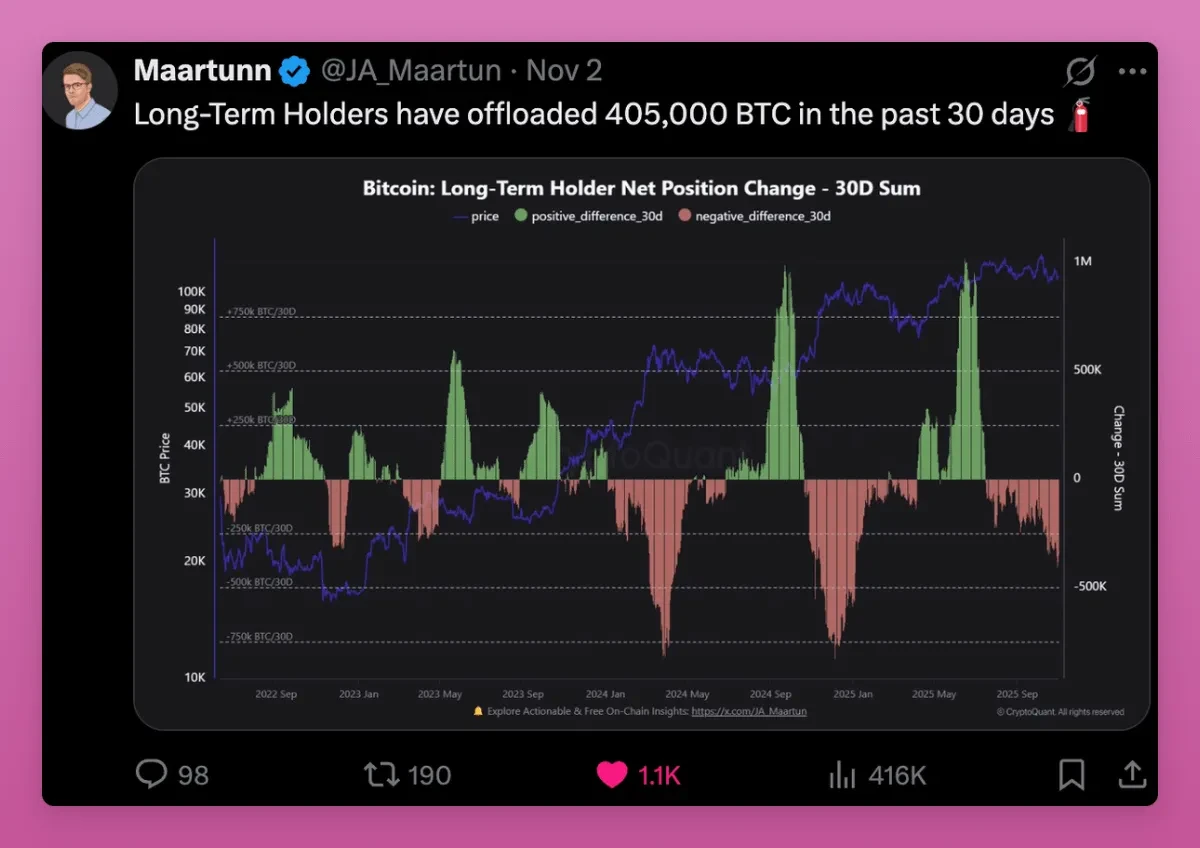
Take Owen Gunden as an example; he is one of the early BTC whales. He made large transactions on Mt. Gox, holds a massive position, and is a board member of LedgerX. His associated wallet holds over 11,000 BTC, making him one of the largest individual holders on-chain.
Recently, his wallet has started transferring large amounts of BTC to Kraken, moving thousands of BTC in batches. This typically indicates that he is preparing to sell. On-chain analysts believe he may be getting ready to sell most of his BTC, valued at over $1 billion.
He hasn't tweeted since 2018, but this move aligns with my "great turnover" theory, where some people are moving into ETFs for tax benefits or selling for portfolio diversification (like buying ZEC?).
As supply shifts from early whales to new buyers, the average cost price of BTC continues to rise, with new holders now taking control.
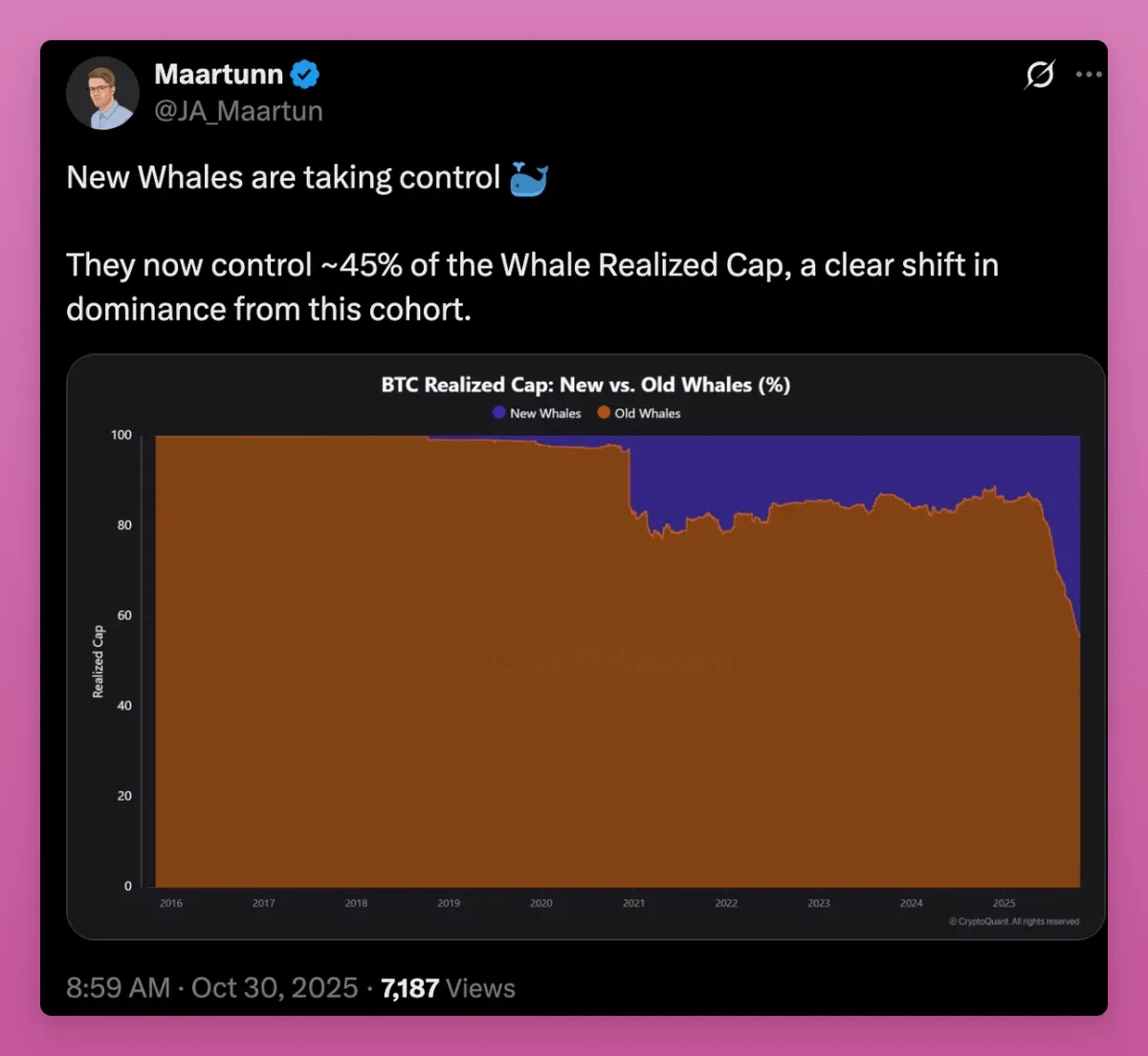
As the average cost basis shifts from early miners to ETF buyers and new institutions, we can see that MVRV is climbing.
Odaily Note: MVRV is "Current Price" ÷ "Holder's Cost Price," a classic on-chain analysis valuation metric for Bitcoin proposed by Murad Mahmudov and David Puell in 2018, widely used to assess whether Bitcoin is overvalued (overheated) or undervalued (oversold).
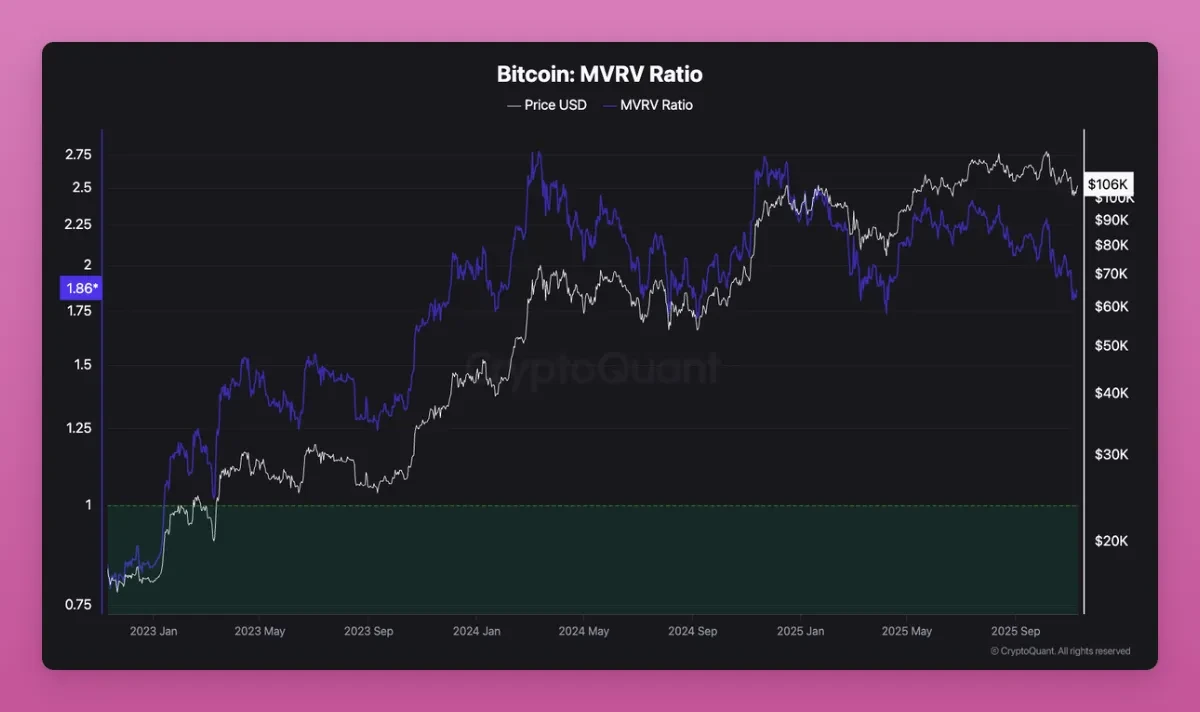
Some might argue that this seems like a bearish signal, as long-standing whales have held significant profits for years, while newly entered whales have been at a loss.
The average cost basis for BTC is close to $110,800, raising concerns that if BTC continues to perform poorly, new investors might choose to sell.
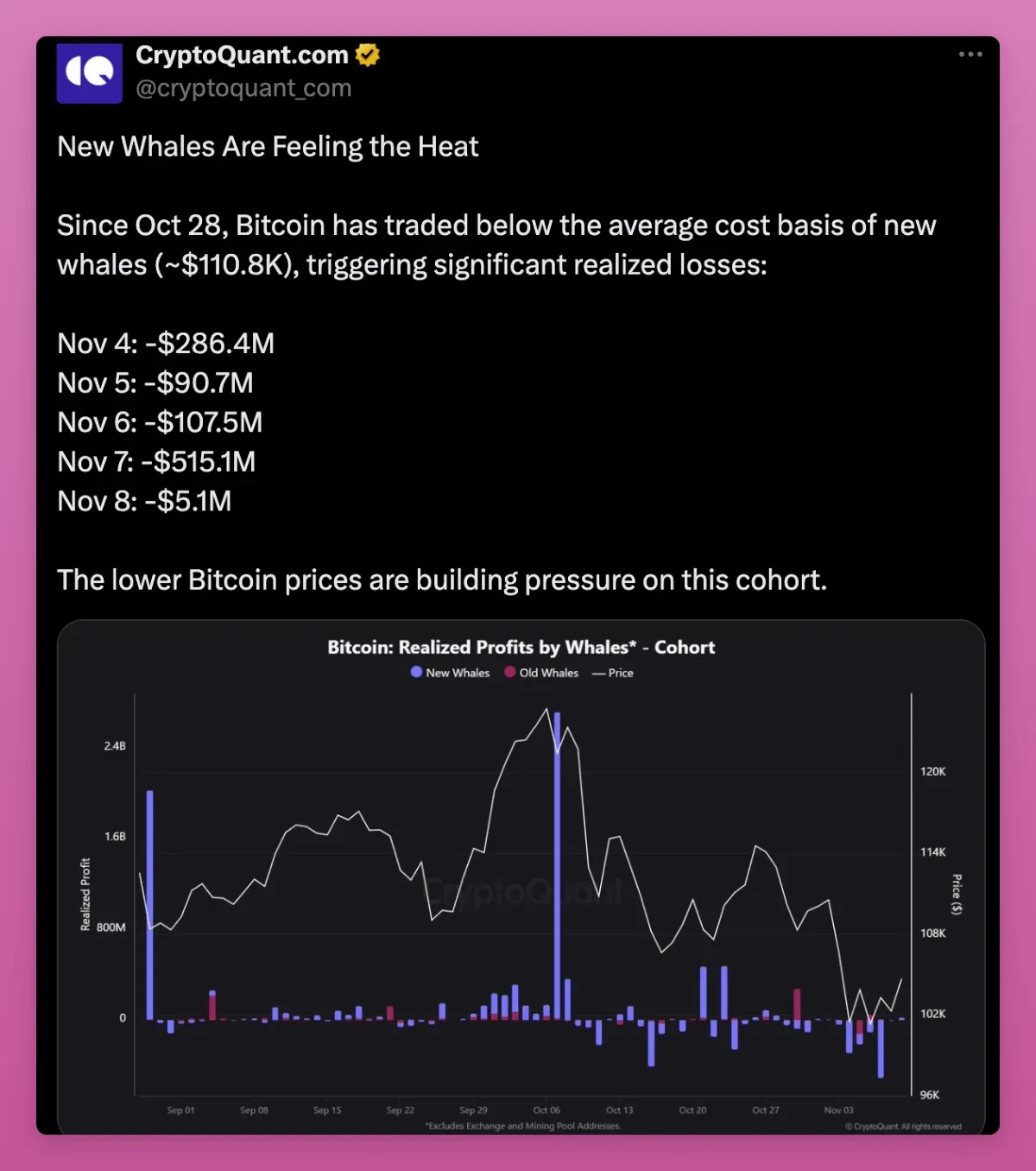
However, the rise in MVRV indicates that ownership is diversifying and becoming more mature. Bitcoin is transitioning from a few ultra-low-cost holders to a group of diversified holders with a higher cost basis.
This is actually a bullish signal. What about beyond Bitcoin?
The Shift of Ethereum Chips
What about ETH? Can ETH exhibit the same "great turnover" pattern? Similar to Bitcoin, this may partially explain the lag in ETH prices.
From a certain perspective, ETH also seems to be winning: both have ETFs, DAT, and institutional investors, although of different natures.
Data shows that ETH is also undergoing a similar transformation, just earlier and more convoluted.
In fact, from one angle, ETH has already caught up with BTC: currently, about 11% of all ETH is held by DAT and ETFs.

Meanwhile, about 17.8% of BTC is held by spot ETFs and large treasury holdings (thanks to Saylor's efforts over the years), and ETH is catching up with this momentum.
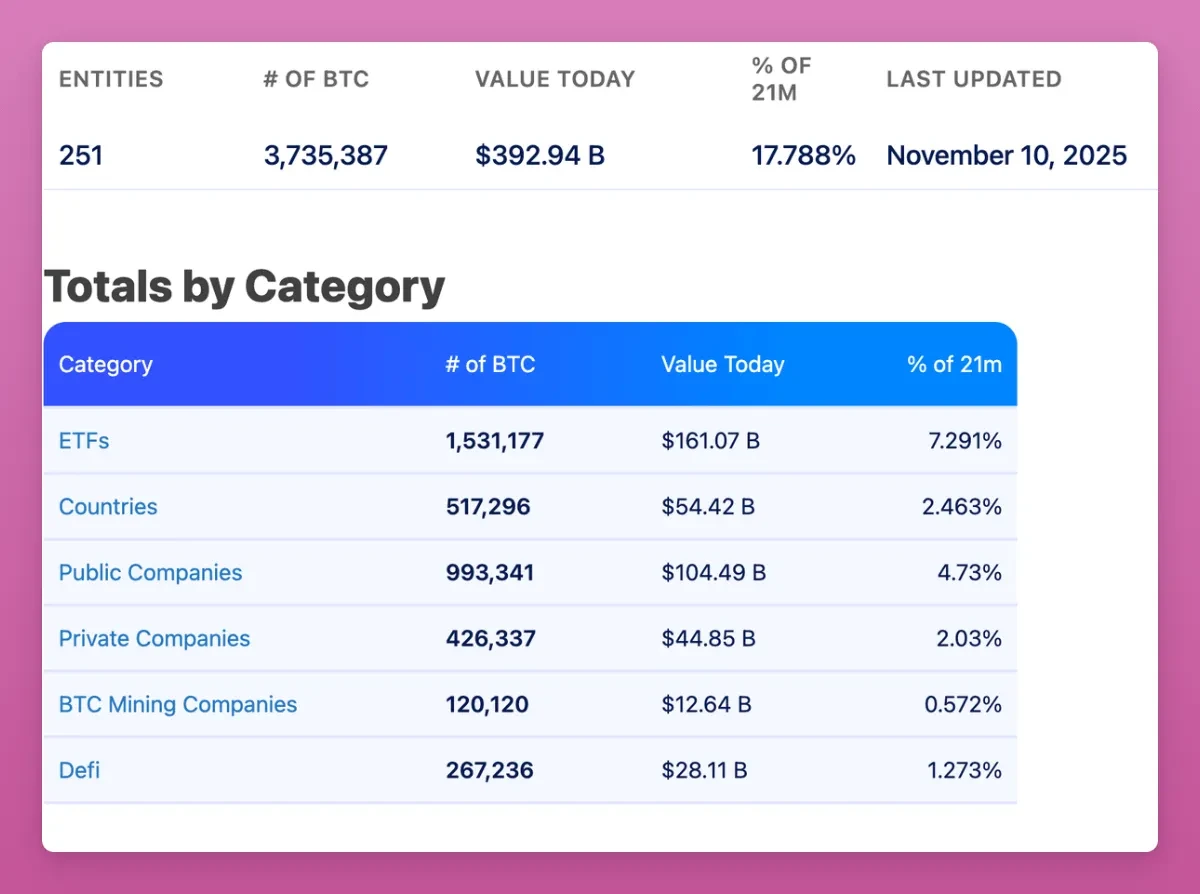
I tried to find relevant data for ETH to verify whether, like BTC, old whales are diversifying ETH to new whales, but was unsuccessful. I even contacted Ki Young Ju from CryptoQuant, who told me that due to ETH's account model, which differs from BTC's UTXO model, it is difficult to compile the data.
Regardless, the main difference seems to be that ETH is shifting from retail investors to whales, while BTC's main transition is from old whales to new whales.
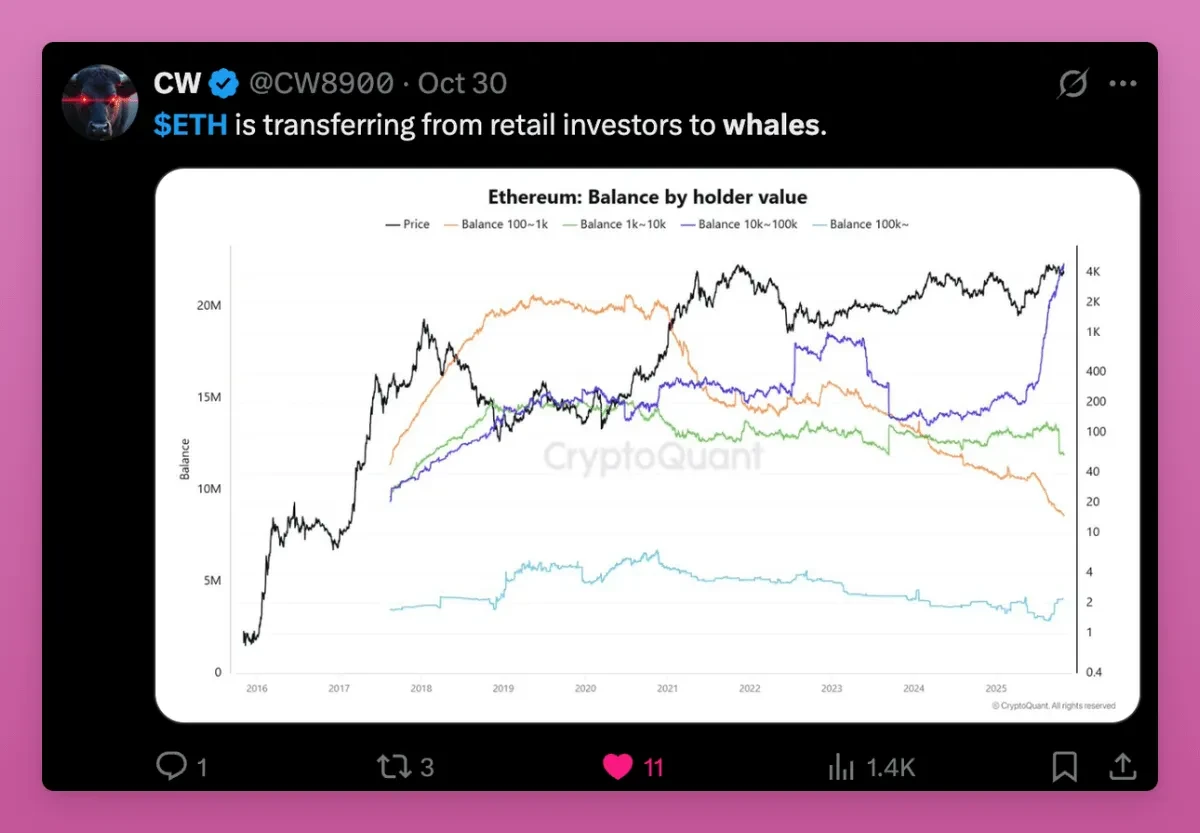
The chart below also shows the trend of ETH ownership shifting from retail to whales.
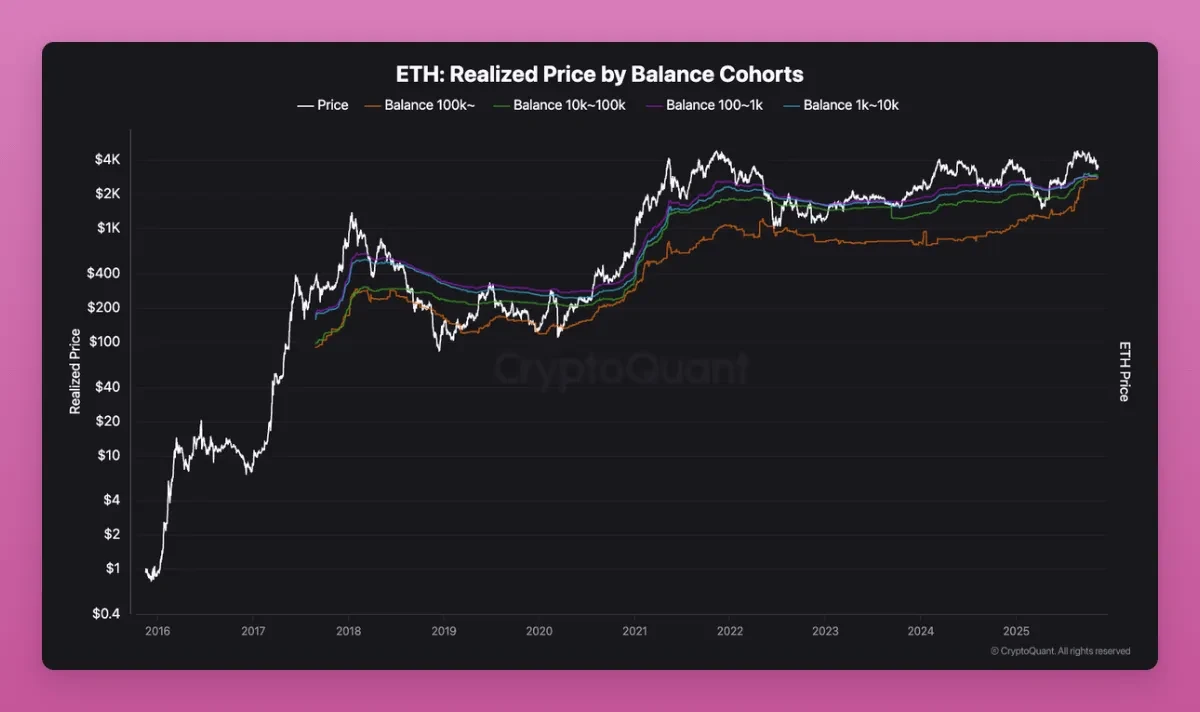
The actual price of large accounts (over 100,000 ETH) is rising rapidly, indicating that new buyers are entering at higher prices while smaller holders are selling off.
Notice that all the lines (orange, green, purple) converge at the same level, meaning that the cost of wallets of various sizes is not far apart, indicating that old tokens have flowed into the hands of new holders.
This cost basis reset should occur before the accumulation phase nears its end and prices rise significantly. Structurally, this indicates that ETH supply is consolidating into the hands of more capable holders, signaling a bullish outlook for ETH.
The rationale for this transition includes:
Retail investors are selling off, while whales and funds are seizing the opportunity to increase their holdings, due to reasons such as: 1) the popularity of stablecoins and tokenization; 2) staking ETFs; 3) participation of institutional investors;
Retail investors view ETH as "fuel," losing confidence in ETH when other L1 tokens emerge. In contrast, whale investors see it as a yield-generating collateral, continuously accumulating for long-term on-chain gains;
When BTC wins, ETH remains in a gray area, prompting whales to act first to prevent institutional investors from entering.
The combination of ETFs and DAT has made the ETH holder base more institutionalized, but it remains unclear whether they are more inclined towards long-term growth. A major concern is that ETHZilla announced plans to sell ETH to repurchase its shares. This is not a reason for panic, but it has set a precedent.

Overall, ETH also aligns with the "great turnover" theory. Its structure is less clear than Bitcoin's due to a more diverse holder base, more use cases (such as liquid staking into a few large wallets), and more reasons for holders to transfer tokens on-chain.
The Movement of Solana Chips
Determining which stage SOL is in regarding the turnover theory is quite challenging, even identifying institutional wallets or major holders is difficult. Nevertheless, some patterns can be discerned.
SOL is entering the same institutional phase as ETH. Last month, a SOL spot ETF appeared on CT without any hype. Although the inflow of funds is not particularly high (totaling $351 million), there has been a positive daily inflow.
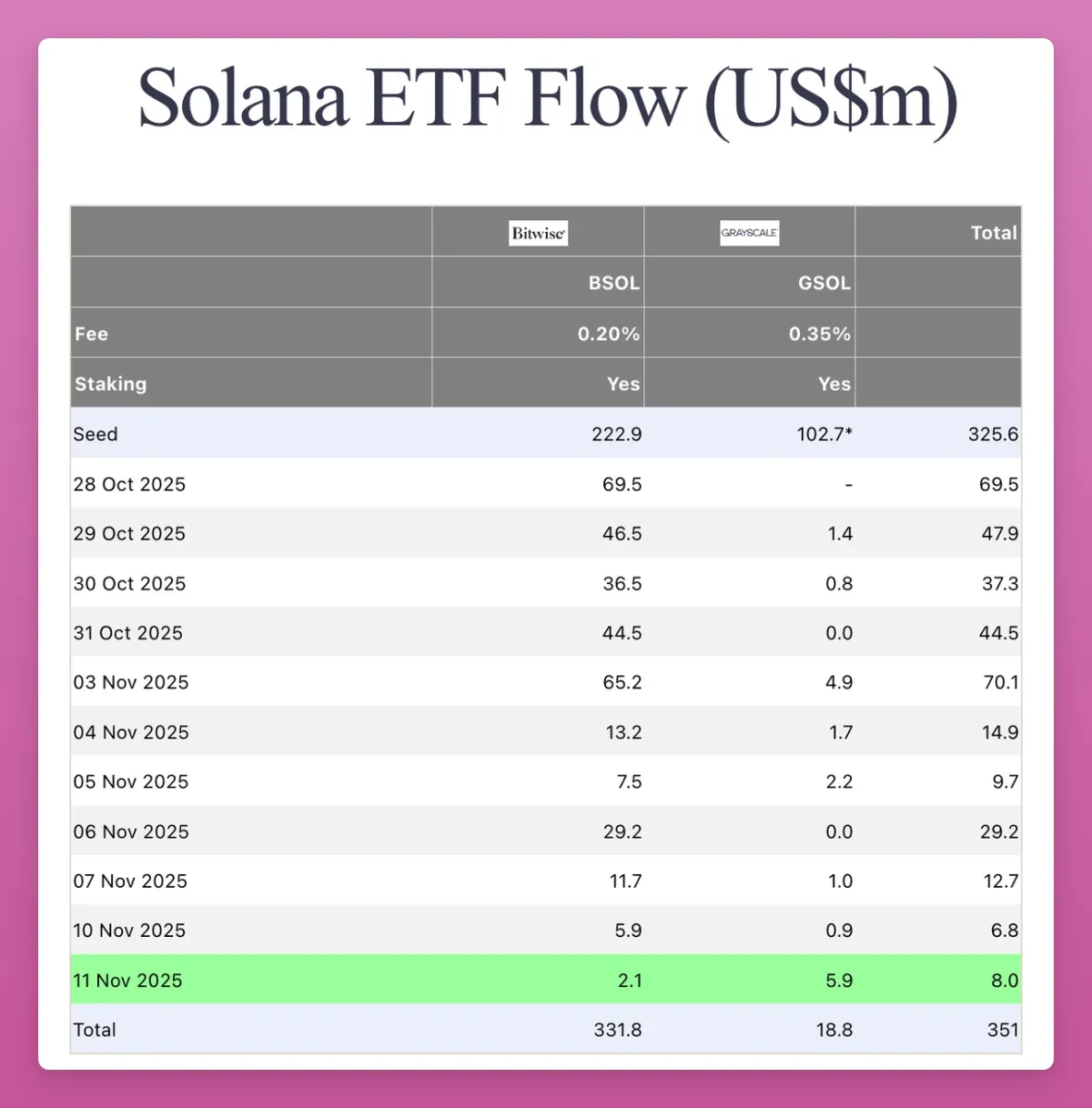
Some DAT companies have also started buying SOL, and the quantity is quite substantial:

Currently, 2.9% of all circulating SOL is held by DAT companies, valued at $2.5 billion. More information about SOL DAT structure can be found in this article from Helius.
Thus, SOL now has the same TradFi infrastructure investors as BTC and ETH, including regulated funds and treasury companies, albeit on a smaller scale. SOL's on-chain data is chaotic but still concentrated among early insiders and venture capital wallets. These tokens are gradually flowing into the hands of new institutional buyers through ETFs and treasuries.
The great turnover has reached SOL, albeit occurring a cycle later.
Therefore, if the turnover of BTC and, to some extent, ETH is nearing its end, with prices poised to rise at any moment, then the situation for SOL is not hard to predict.
What Happens Next
BTC's turnover has ended first, followed closely by ETH, albeit with some lag, while SOL will require more time. So, where do we stand in this cycle?
In past cycles, the strategy was simple: first BTC surged, then ETH, and the wealth effect gradually emerged. People profited from mainstream cryptocurrencies and shifted towards lower market cap altcoins, boosting the entire market.
This time, the situation is different.
BTC is stagnating at a certain stage of the cycle; even if prices rise, old players are either moving into ETFs or cashing out to improve their lives outside of crypto. There is no wealth effect, no spillover effect, only the PTSD brought by FTX, and the hard work continues.
Altcoins are no longer competing for monetary status with BTC; instead, they are competing in terms of utility, yield, and speculation. Most products fail to meet these criteria. Here are a few recommended categories:
- Blockchains that are truly in use: Ethereum, Solana, and perhaps one or two others;
- Products with cash flow or actual value appreciation;
- Assets with unique demand that BTC cannot replace (like ZEC);
- Infrastructure that can attract fees and attention;
- Stablecoins and RWA.
Innovation and experimentation in the crypto space will continue to emerge, so I don't want to miss this new hotspot while everything else turns into noise.
The activation of the fee switch by Uniswap is a key moment: it may not be the first, but it is the most prominent DeFi protocol to date, forcing all other protocols to follow suit and start distributing fees (buybacks) to token holders.
Out of 10 lending protocols, 5 have already shared profits with token holders.
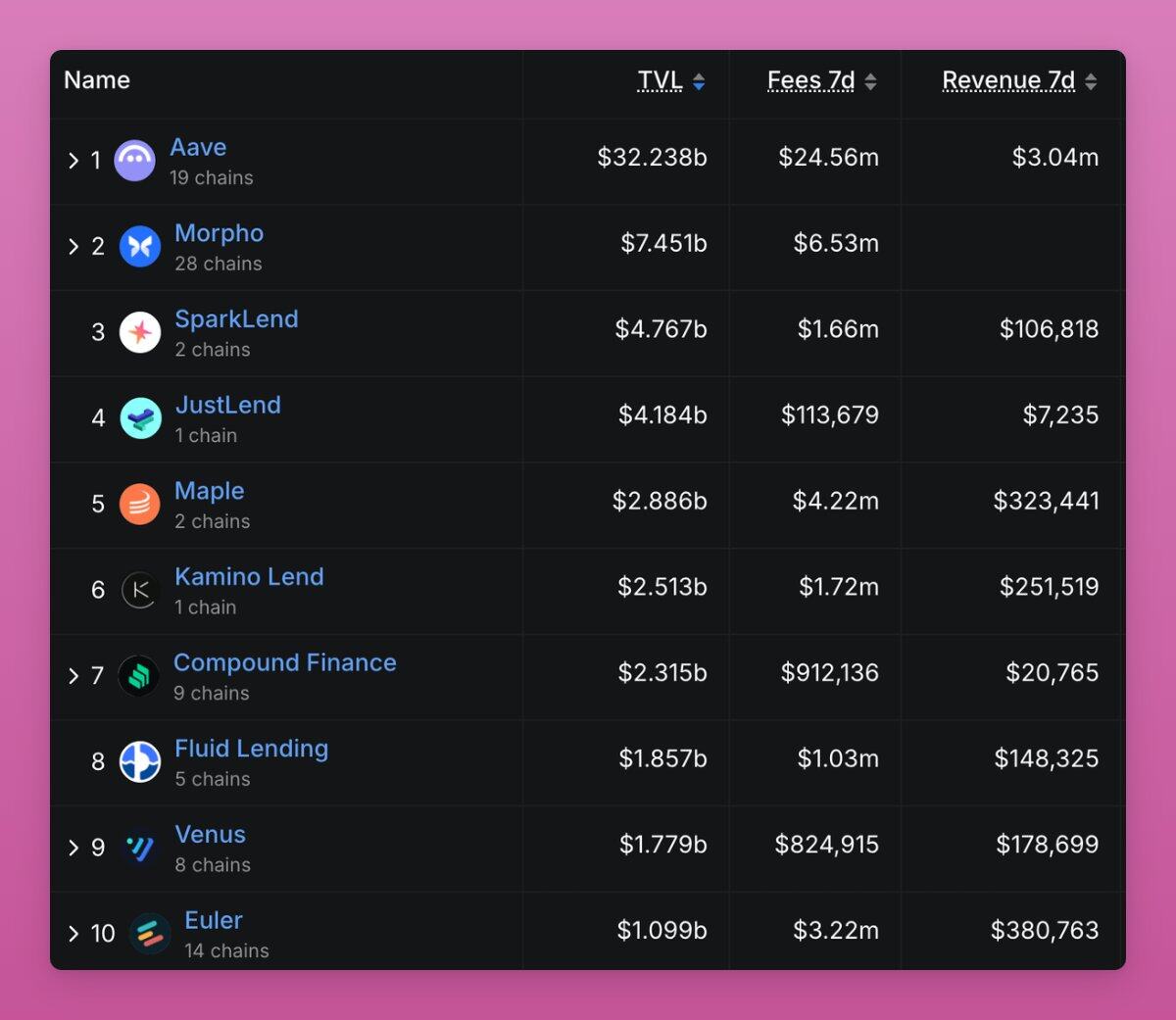
Thus, DAOs have transformed into on-chain companies, with the value of their tokens depending on the revenue they generate and redistribute, which will be the next rotation point.
免责声明:本文章仅代表作者个人观点,不代表本平台的立场和观点。本文章仅供信息分享,不构成对任何人的任何投资建议。用户与作者之间的任何争议,与本平台无关。如网页中刊载的文章或图片涉及侵权,请提供相关的权利证明和身份证明发送邮件到support@aicoin.com,本平台相关工作人员将会进行核查。



